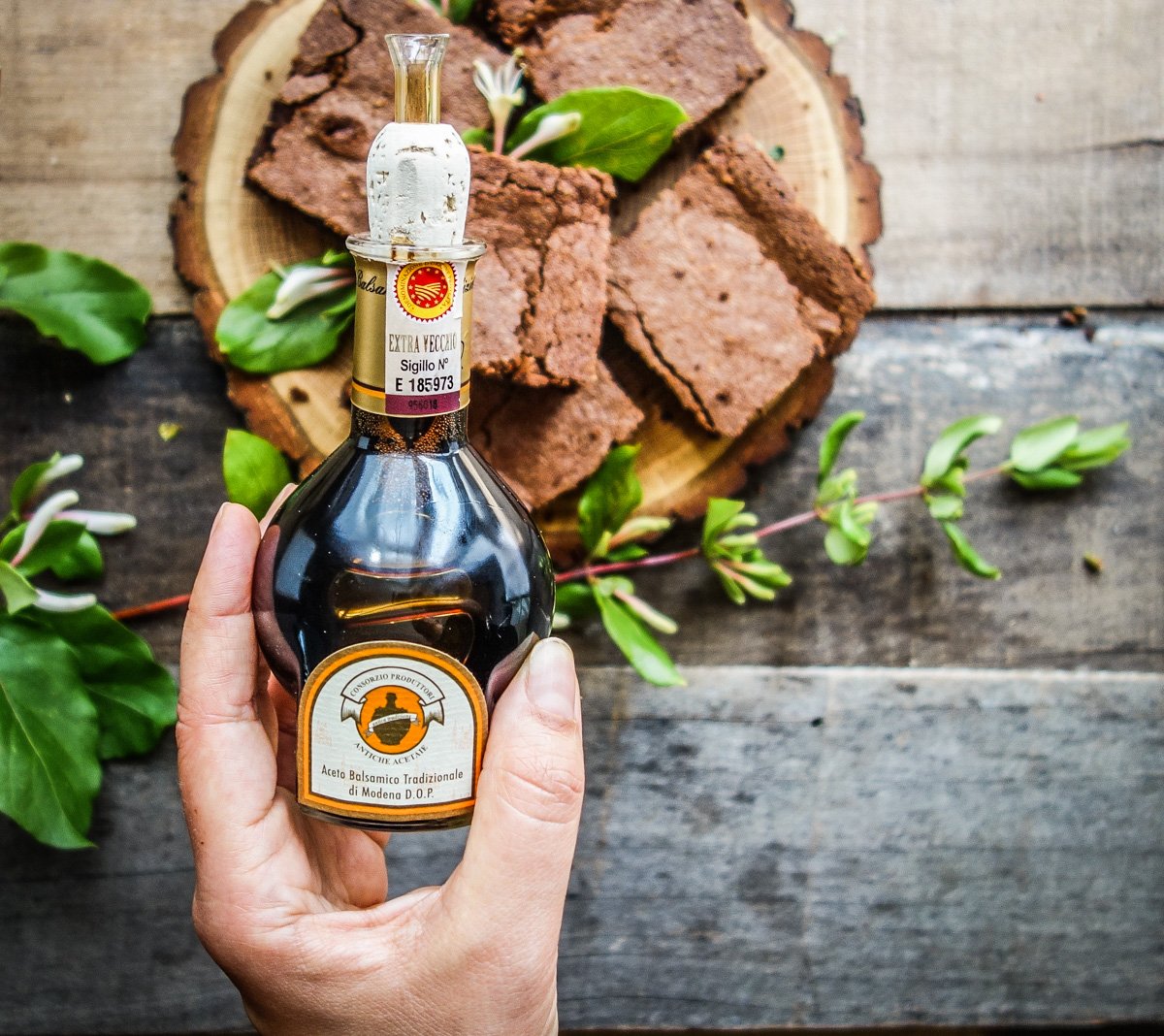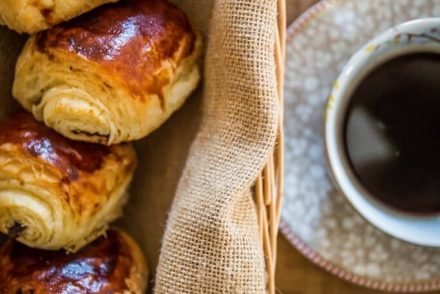Along narrow, bendy roads, among gentle, green hills of vineyards, nectarines, pears, plums, apricots, Morette cherries and cottages where the renowned Parmigiano Reggiano is made, Vignola appears, a small town set along the Panaro river.
I arrived there on a bright morning at the beginning of April: the mild weather, the fruit trees in blossom, the clear blue sky and…it was easy to feel even luckier than Cristopher Columbus. So much beauty, only a few hours away from home. A walk along the lanes of the town centre to the majestic medieval Castle, remnant of a past of defensive fortifications, and then turning back to reach the door of the historical Pasticceria Gollini.
It’s a fascinating story, the one of pastry chef Eugenio Gollini. Towards the end of the XIX century, when he was only in his early twenties, he decided to open his own pastry shop, leaving the one he used to work for as an employee: a dream that, I would guess, each employee has at least once in their lives.
His days were filled by a recurring thought: create the cake that, up until now, existed only as an idea in his head. Before reaching the much desired result, he got many Vignolesi to have a taste of his numerous attempts, to get their feedback and opinions.
A work of art that was born in his head and took life, not without collective participation, in a small “black clump”, as Michele Serra described it, brittle and crumbly, of an intensely warm and earthy taste. It’s hard to find the right and original adjectives to describe the Torta Barozzi and even harder to identify all steps to replicate it since the recipe is still secret, actually super-secret, as I was told by the lovely Mrs Paola, great-granddaughter of the pastry chef, in front of a nice coffee and some sweet samples, among the pastry walls in Vignola. “But I can tell you one thing…there are absolutely no coffee grounds!”
Really? But then, why there are so many recipes online, claiming to be the real one, the original one, and that include this ingredient? Maybe because the feeling to the palate is really similar to tasting coffee grounds, even though the idea may sound hateful.
The chef Massimo Bottura, proud spokesman or the Modena’s riches, a few years ago mentioned in a video how this little jewel was delicious with a few drops of Modena balsamic vinegar. Therefore, I decided to complete my tour of Emilia Romagna with a visit to the producer consortium Antiche Acetaie di Modena, looking for the perfect combination.
Up until now, all my knowledge about making vinegar was limited to some vivid memories of large ampoules, stored in my father’s cellar, with transparent liquids and spongy “mothers” of strongly pungent smell.
Vinegar was for me, back then, stuff for grown-ups: I closed my nose with energy and I was always in and out of the dark room with a certain rush.
But that was wine vinegar, a totally different story.
Here I learn that balsamic vinegar is made from sweet “Trebbiana” grapes, left on the grapevine to be kissed by the sunshine for as long as possible. The grapes are then pressed and the resulting syrup (“mosto”) is slowly cooked until reduced as required. The cooked syrup (“mosto cotto”) is then filtered and left to cool. It will then be exposed to various types of woods, among “travasi” and “rincalzi” from casket to casket, for a very long time…until becoming a dark, syrupy liquid, pleasantly velvety and slightly acidic: the perfect contrast to the deep, warm taste of the Barozzi cake.
So I packed the precious ampoule in the car and went on my way home.
The following day, and many more days afterwards, I was alone facing the serious difficulties of making a cake of which I totally ignored the doses. If the recipe is secret, how can I make the Barozzi cake?
I tied to make it at least a dozen times, re-calibrating quantities at each attempt while always sticking to the ingredients list on the label, with the only exception of margarine, which I substituted with butter.
Each time I was adding or removing the peanuts, adding or removing coffee, looking for the perfect balance.
Then I stopped. Whether my combination is the same as the original, I’ll never know, and maybe Mr. Gollini wouldn’t approve, but the result, while not equal to the original, is a delicious mouthful that will charm everyone.
Let me know what you think about this Torta Barozzi recipe at the bottom of the page!

TIPS
to make the perfect Torta Barozzi
1. The recipe has peanuts. It’s hard to find peanuts flour so you can make your own by peeling toasted peanuts, grinding them with a blender.
2. The cake keeps perfectly for various days in the fridge or even on the counter, if the room is not too warm.
3. Keep it in the aluminium foil used for cooking it.
TOOLS
Oven dish, rectangular or squared, approx. 20*25 cm
Aluminium foil
KItchen machine with flat-beater or flexy-beater
Sieve
Blender or mixer (to grind the peanuts)

INGREDIENTS
150 g + 50 g caster sugar
160 g peanuts flour (or finely grinded peeled peanuts)
40 g unpeeled almond flour (grind the almonds with their peel) 4 eggs, room temperature
200 g softened butter (room temperature) – or margarine if you prefer, like in the original recipe
150 g dark chocolate 61%
15 g instant coffee, dissolved in 2/3 spoons of hot water
20 g unsweetened cocoa
pinch of salt
METHOD
Mix the flours with the cocoa and the pinch of salt. Melt the chocolate in a bain-marie or in the microwave (at the maximum power for no longer than 20/30 seconds at the time).
Leave it to cool a bit, then add the egg yolks and mix well with a spatula.
In the kitchen machine, using the flat beater, or in a bowl, mix the softened butter with 150g of sugar until creamy, white and fluffy. Add the mixture of eggs and chocolate and mix well with a spatula. Add the coffee, then finally the mixtures of flours and cocoa.
Beat the egg whites and, when foam starts to appear on top, add the 50 g of sugar. Continue to beat until you get a lovely shiny meringue.
Slowly incorporate the meringue to the mixture with the aid of a spatula and moving from bottom to top.
Pour into an oven dish, lined with aluminium foil, and cook in the oven pre-heated to 175° C for approximately 25 minutes.
Remove the dish and leave to cool. Then turn it upside down on the counter, without removing the aluminium. Since it crumbles easily, it will be easier to cut it this way, as recommended by the very same Pasticceria Gollini.








No Comments